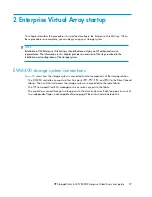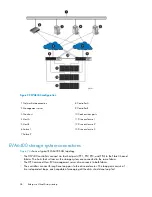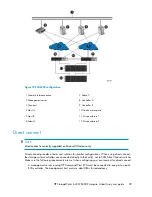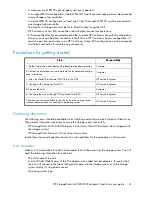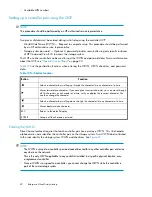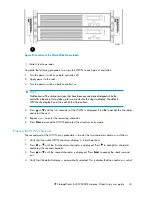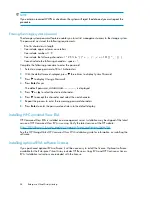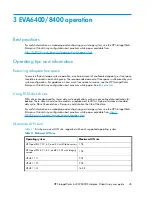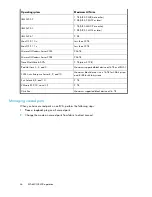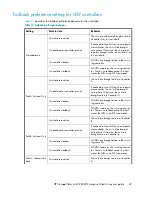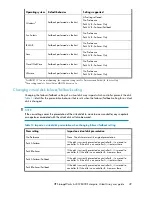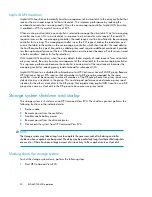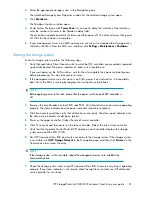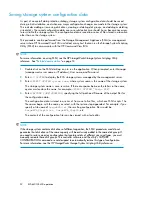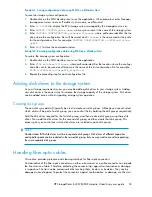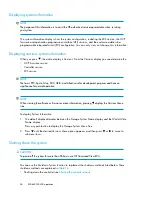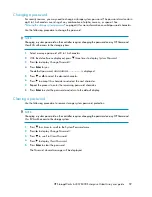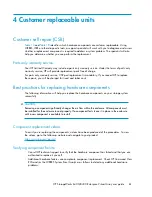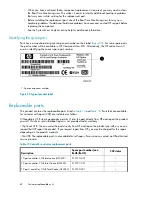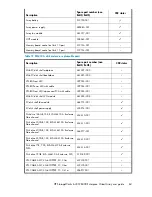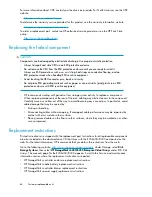
Implicit LUN transition
Implicit LUN transition automatically transfers management of a virtual disk to the array controller that
receives the most read requests for that virtual disk. This improves performance by reducing the
overhead incurred when servicing read I/Os on the non-managing controller. Implicit LUN transition
is enabled in VCS 4.x and all versions of XCS.
When creating a virtual disk, one controller is selected to manage the virtual disk. Only this managing
controller can issue I/Os to a virtual disk in response to a host read or write request. If a read I/O
request arrives on the non-managing controller, the read request must be transferred to the managing
controller for servicing. The managing controller issues the I/O request, caches the read data, and
mirrors that data to the cache on the non-managing controller, which then transfers the read data to
the host. Because this type of transaction, called a proxy read, requires additional overhead, it provides
less than optimal performance. (There is little impact on a write request because all writes are mirrored
in both controllers’ caches for fault protection.)
With implicit LUN transition, when the array detects that a majority of read requests for a virtual disk
are proxy reads, the array transitions management of the virtual disk to the non-managing controller.
This improves performance because the controller receiving most of the read requests becomes the
managing controller, reducing proxy read overhead for subsequent I/Os.
Implicit LUN transition is disabled for all members of an HP Continuous Access EVA DR group. Because
HP Continuous Access EVA requires that all members of a DR group be managed by the same
controller, it would be necessary to move all members of the DR group if excessive proxy reads were
detected on any virtual disk in the group. This would impact performance and create a proxy read
situation for the other virtual disks in the DR group. Not implementing implicit LUN transition on a DR
group may cause a virtual disk in the DR group to have excessive proxy reads.
Storage system shutdown and startup
The storage system is shut down using HP Command View EVA. The shutdown process performs the
following functions in the indicated order:
1.
Flushes cache
2.
Removes power from the controllers
3.
Disables cache battery power
4.
Removes power from the drive enclosures
5.
Disconnects the system from HP Command View EVA
NOTE:
The storage system may take a long time to complete the necessary cache flush during controller
shutdown when snapshots are being used. The delay may be particularly long if multiple child snapshots
are used, or if there has been a large amount of write activity to the snapshot source virtual disk.
Shutting down the storage system
To shut the storage system down, perform the following steps:
1.
Start HP Command View EVA.
EVA6400/8400 operation
50
Summary of Contents for 6400/8400
Page 12: ...12 ...
Page 16: ...About this guide 16 ...
Page 60: ...EVA6400 8400 operation 60 ...
Page 66: ...Customer replaceable units 66 ...
Page 80: ...Error messages 80 ...


